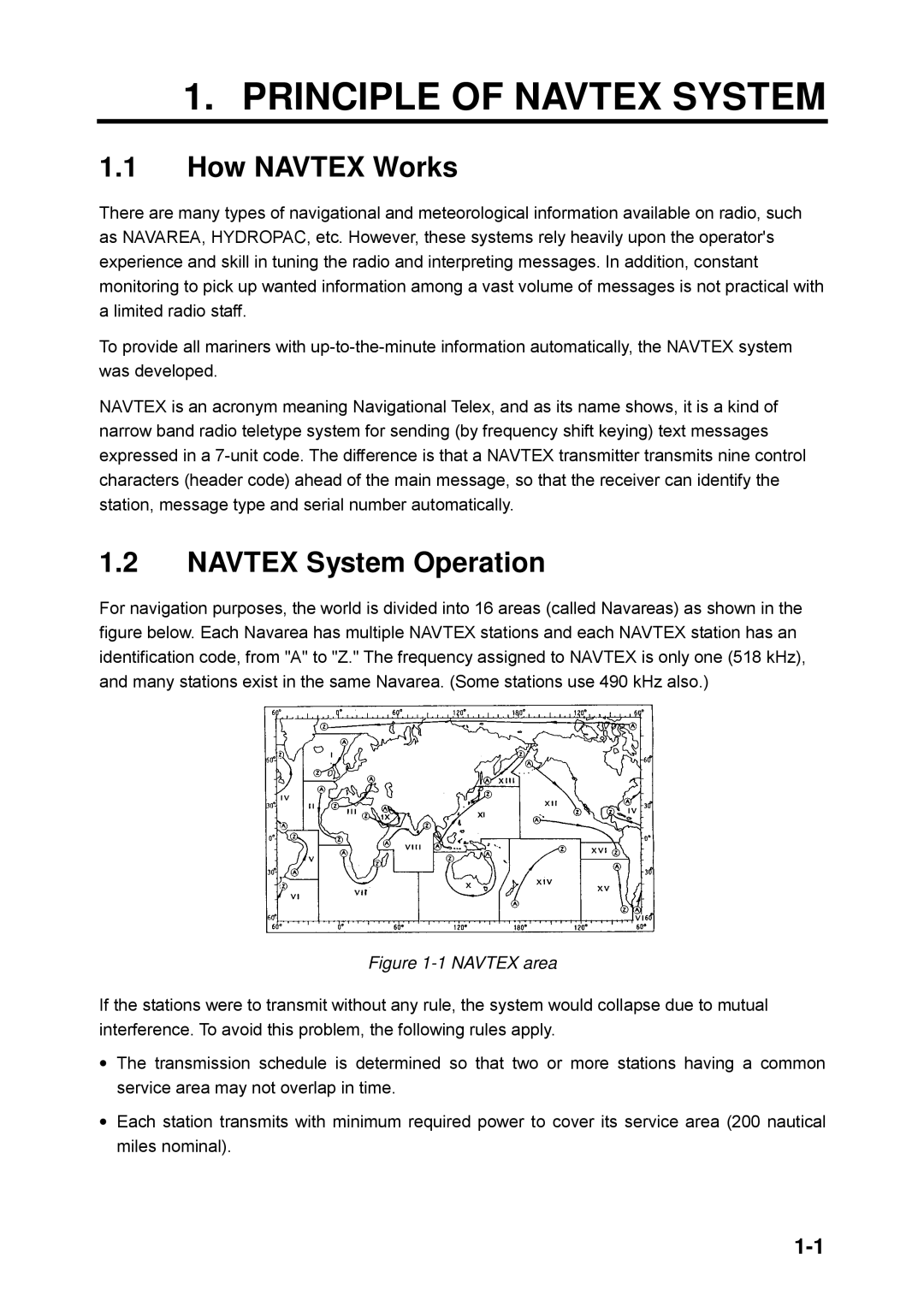
1.PRINCIPLE OF NAVTEX SYSTEM
1.1How NAVTEX Works
There are many types of navigational and meteorological information available on radio, such as NAVAREA, HYDROPAC, etc. However, these systems rely heavily upon the operator's experience and skill in tuning the radio and interpreting messages. In addition, constant monitoring to pick up wanted information among a vast volume of messages is not practical with a limited radio staff.
To provide all mariners with
NAVTEX is an acronym meaning Navigational Telex, and as its name shows, it is a kind of narrow band radio teletype system for sending (by frequency shift keying) text messages expressed in a
1.2NAVTEX System Operation
For navigation purposes, the world is divided into 16 areas (called Navareas) as shown in the figure below. Each Navarea has multiple NAVTEX stations and each NAVTEX station has an identification code, from "A" to "Z." The frequency assigned to NAVTEX is only one (518 kHz), and many stations exist in the same Navarea. (Some stations use 490 kHz also.)
Figure 1-1 NAVTEX area
If the stations were to transmit without any rule, the system would collapse due to mutual interference. To avoid this problem, the following rules apply.
•The transmission schedule is determined so that two or more stations having a common service area may not overlap in time.
•Each station transmits with minimum required power to cover its service area (200 nautical miles nominal).
